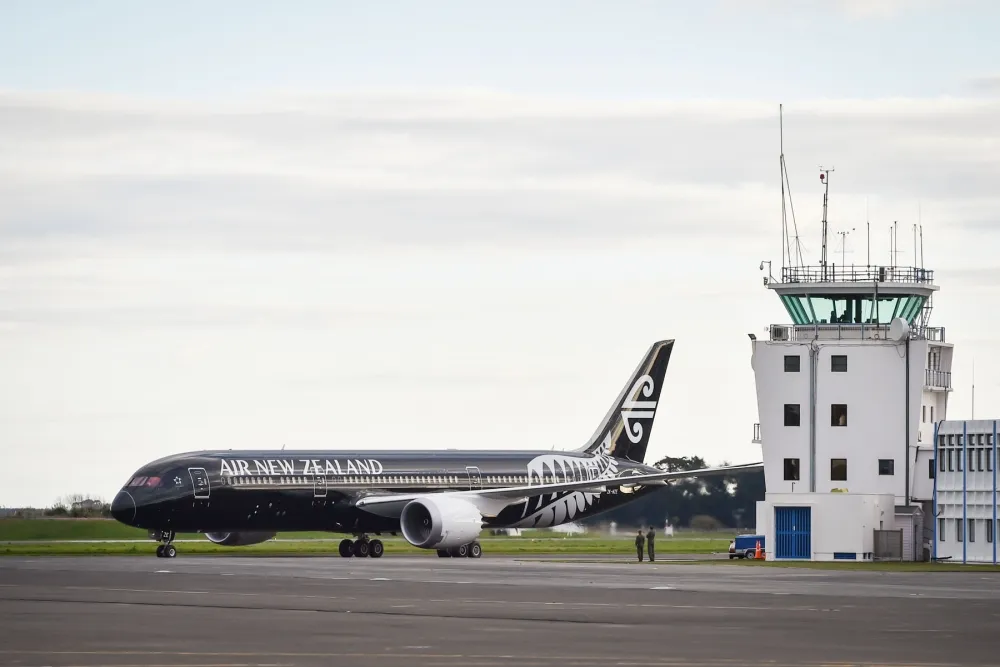
Power supply failure halts New Zealand departures
Sep 30, 2019

A significant power supply failure disrupted operations at Auckland Airport in New Zealand, resulting in the suspension of departing flights. The outage, which affected various systems crucial for flight management, led to delays and cancellations, stranding passengers and causing widespread chaos at the terminal. Airport authorities worked swiftly to resolve the issue, but the impact was felt throughout the day as travelers faced uncertainty and frustration. Emergency protocols were activated, and staff assisted passengers with rebooking and accommodations, highlighting the vulnerability of infrastructure to unforeseen technical challenges. The incident raised concerns about the resilience of critical systems in aviation.
On a typical day, hundreds of flights take off from New Zealand’s airports, serving as a gateway for international travelers and business operations. However, a recent power supply failure disrupted this routine, resulting in significant delays and cancellations. Understanding the implications of this incident is crucial for travelers and aviation professionals alike.
Impact on Flight Departures
The power supply failure led to the grounding of numerous flights across New Zealand's major airports. The primary airports affected included Auckland, Wellington, and Christchurch, which are essential hubs for both domestic and international travel. Passengers found themselves stranded, with many reporting long waits for updates and alternative arrangements.
According to reports, the failure was caused by an unexpected electrical fault, which affected not only the flight operations but also the airport's communication systems. This incident highlights the critical need for robust infrastructure and contingency plans in airport operations.
Passenger Experience During the Outage
For travelers, the experience of being stuck at the airport can be frustrating. Many passengers expressed their dissatisfaction with the lack of information provided during the crisis. Here are some common reactions:
| Passenger Reaction | Comments |
|---|---|
| Frustration | Long wait times with no clear communication from airlines. |
| Concern | Worries about missed connections and accommodation issues. |
| Disappointment | Cancellations and delays impacted travel plans significantly. |
Response from Airlines
Airlines responded promptly to the situation, working to rebook affected passengers and provide accommodations where necessary. However, the scale of the disruption meant that many travelers faced lengthy delays before they could secure a new flight. Airlines emphasized their commitment to customer service during these challenging times.
In the aftermath, airlines are likely to review their emergency protocols and communication strategies to better handle similar incidents in the future. The importance of clear communication and rapid response cannot be overstated in maintaining passenger trust and satisfaction.
Lessons Learned from the Incident
This power supply failure serves as a reminder of the vulnerabilities in airport infrastructure. Here are some key lessons that can be drawn from this incident:
- Robust Infrastructure: Airports must invest in reliable power supply systems to avoid disruptions.
- Emergency Protocols: Developing comprehensive emergency response plans is essential for minimizing the impact of unforeseen events.
- Effective Communication: Providing timely updates to passengers can help alleviate frustration and manage expectations.
Future Considerations for Air Travel
As travel resumes to pre-pandemic levels, airports and airlines are under increasing pressure to ensure seamless operations. The recent power supply failure in New Zealand serves as a cautionary tale for the entire aviation industry. Stakeholders must prioritize the following:
| Consideration | Description |
|---|---|
| Infrastructure Investment | Investing in modern infrastructure to prevent similar failures. |
| Technology Upgrades | Implementing advanced monitoring systems to detect issues early. |
| Training and Development | Regular training for staff on emergency procedures and customer service. |
Conclusion
The recent power supply failure that halted flight departures in New Zealand serves as a significant wake-up call for the aviation industry. With travel demand on the rise, it is imperative for airports and airlines to enhance their operational resilience. By addressing infrastructure vulnerabilities and improving communication strategies, they can better serve passengers and ensure smoother travel experiences in the future.
As the industry moves forward, the emphasis on safety, reliability, and customer satisfaction will be more critical than ever. Stakeholders must collaborate to create a robust aviation environment that can withstand unexpected disruptions, ultimately leading to improved service and a better travel experience for all.
Related Articles

Explore Thailand: The Best Islands to Visit for Paradise, Adventure, and Relaxation

The Ultimate Guide to the Best Islands in Thailand for Your Next Getaway

Do babies need passports? How to get a passport for a newborn

How to get a U.S. passport fast: here’s how to expedite the process

What is Mobile Passport Control: 5 reasons why you should use it

SENTRI vs. Global Entry: A detailed guide

Do you need a passport to go to the Bahamas? Let’s find out

Do you need a passport to go to Mexico? A detailed guide

Do you need a passport to go to Canada? We got the answer

Do You Need a Passport for a Cruise: An Essential Travel Guide

Booster Seat Requirements: All the Rules to Follow in Your Rental Car

What Are the World’s Most Powerful Passports, and How Does Yours Rank?

How to Take a Passport Photo at Home: A Helpful Guide

You've got to have heart! Southwest's new livery

Your opinion: Should water be free on low cost carriers?

Young women bolder than guys as solo travellers
